
This website explains aquaculture, provides examples, and explains NOAA's role in regulation.
- Subject:
- Earth Science
- Science
- Material Type:
- Lesson
- Provider:
- National Oceanic and Atmospheric Administration
- Author:
- NOAA
- Date Added:
- 02/26/2019

This website explains aquaculture, provides examples, and explains NOAA's role in regulation.

This video discusses the causes and effects of ocean acidification.
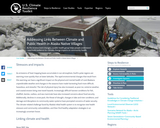
As emissions of heat-trapping bases accumulate in our atmosphere, Earth's polar regions are warming more quickly than at lower latitudes. The rapid environmental changes that result from this warming can have a significant impact on the physical and mental health of rural Alaskans: unpredictable weather and changes in the seasons have made harvesting food more difficult, hazardous, and stressful. The risk of physical injury has also increased, as poor ice, extreme weather, and coastal erosion bring new travel hazards. Increasingly difficult harvest conditions for fish, shellfish, berries, caribou, and sea mammals have also increased concerns about food security. Additionally, declines in snow pack, the threat of drought, changes in lake and river conditions, and damage and disruptions to community water systems have prompted concerns of water security. The climate-related challenge faced by Alaskas tribal health system is to recognize new health stressors and community vulnerabilities, and then find healthy adaptation strategies in an increasingly uncertain future.
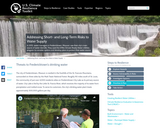
In 2012, water managers in Fredericktown, Missouri, saw their city's main source of water dwindle. They used the EPAs Climate Ready Water Utilities program to consider options and develop plans to protect their water source.
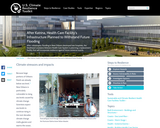
After catastrophic flooding in New Orleans destroyed two hospitals, the Southeast Louisiana Veterans Health Care System is planning a replacement facility that will incorporate resilience against future extreme events.
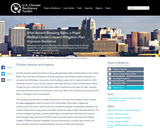
Widespread damage from flooding at the Texas Medical Center in Houston revealed the complex's vulnerabilities. Implementing a long-term hazard mitigation plan is reducing future risks.
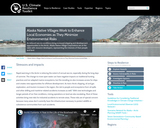
As reduced sea ice conditions bring increased shipping and development opportunities to the Arctic, Alaska Native Village Corporations are at the table with resource developers, representing the interests of their people and land.
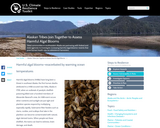
Tribal communities in southeastern Alaska are partnering with federal and state agencies to investigate increasing harmful algal bloomsevents that pose human health risks to subsistence harvesters.
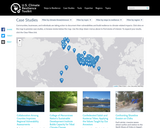
In Florida's humid climate, strawberry growers are in a constant battle with two kinds of fruit rot. Using a decision support system, they can save money by spraying fields only when the plant diseases are a threat.
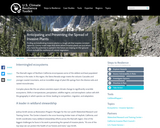
Finding and eradicating invasive plants is a tough job that requires constant vigilance. County-scale maps that show where invasive plants are and where they have the potential to spread in the future are helping on-the-ground efforts to build the resilience of natural vegetation.
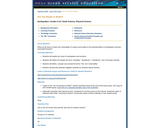
Students will conduct research to learn about the vulnerability of coastal communities to the potential effects of earthquakes and their associated hazards and what can be done to reduce the risk.
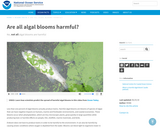
This article and video highlights the facts about algal blooms, which can destroy biodiversity and affect coastlines.
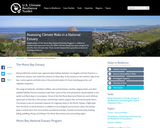
Stakeholders of the Morro Bay National Estuary Program in California worked with resources from the EPA's Climate Ready Estuaries program to identify their climate risks. Their results helped them prioritize actions for building resilience.
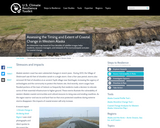
An interactive map based on four decades of satellite images helps residents, resource managers, and stewards of the land anticipate and plan for coastal change.

Students will be able to describe the movement of tectonic plates, and differentiate between the three typical boundary types that occur between tectonic plates.
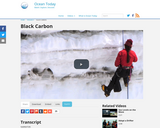
Black carbon, another name for soot, is shown in this video, and contributes to the melting of sea ice.
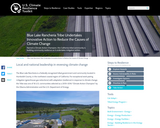
The Blue Lake Rancheria Tribe—a federally recognized Native American tribe in California—was one of 16 communities selected as a 2015–2016 Climate Action Champion by the Obama Administration for exceptional work in response to climate change.
The Tribe began its strategic climate action planning in 2008 and has become a regional leader in greenhouse gas reductions and community resiliency measures. To date, the Tribe has reduced energy consumption from 2008 levels by 35 percent and has committed to reduce greenhouse gas emissions 40 percent by 2018, utilizing a range of approaches—including aggressive energy efficiency upgrades, developing on-site renewable energy (biomass, solar, fuel cells, grid battery storage), and switching to green fuels (electricity and biodiesel).

Conservation organizations teamed up to document the climate vulnerability of mountain springs that support unique ecosystems. Now, the Alliance they formed facilitates restoration work to enhance habitats and improve resiliency.
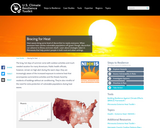
Building on lessons learned over several summers, Kristin Raab—Health Impact Assessment and Climate Change Program Director in the Environmental Health Division of Minnesota’s Department of Health—packaged information from diverse communities into a cohesive toolkit that communities of all sizes can use to prepare for heat waves. The Minnesota Extreme Heat Toolkit describes changing weather conditions in Minnesota, the magnitude of potential health consequences from extreme heat, and key steps communities can take to prevent heat-related illnesses and deaths. The toolkit acknowledges that extreme heat response plans will vary with the size of the community and the habits of its residents: examples from the mostly rural Olmsted County and the urban centers of Saint Paul and Minneapolis illustrate a range of community plans that could be useful in Minnesota and beyond.
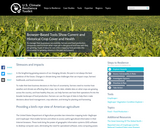
To manage their businesses successfully, farmers and food production companies need to know what crops are in the ground and how well they are growing. A pair of easy-to-use online mapping tools provides this information for growing seasons in the past and present.